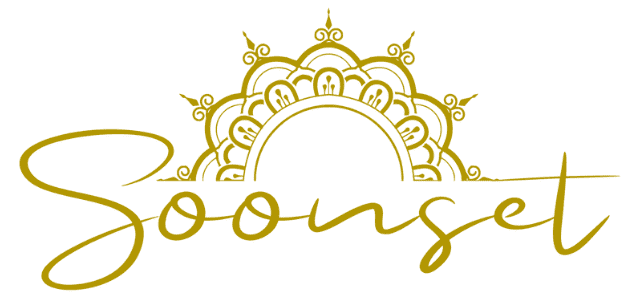In an ideal world, as you contemplate having your own business, your initial budget should account for a professional graphic designer. He would give you a super effective and professional logo, which will be the face of your brand and is going to be with you for a very long time. But not all of us start businesses with healthy, fat, vigorous budgets… That should not stop you from achieving your goals. This is what you can do to have a logo that you are proud of.

The first thing you need to do once you have chosen the name of your company is make sure that that name is not already being used. Search thoroughly, not only in Google, but also in your country’s intellectual property registry office and even in WIPO – World Intellectual Property Organization.
After you make sure it is NOT being used, then decide what would best represent it graphically. This needs to be in sync with your business plan. Make sure you have your SWOT well developed and analyzed and your Persona well defined. This should help you have a better concept of what imagery, colors, etc. would appeal to your audience. Once you have started considering all this, check out what your competition is doing. What type of logos are the people in your line of business using? What colors? Are they just symbols? Do they have names with the symbols? Are they words that are symbols? There are worlds of possibilities out there. Once you have made the research, let it all sit with you for a while. You will start having some ideas for sure.
Logo designer crossroad ahead
With all those great ideas bubbling up in your head, there are two ways of doing this:
- You choose a program that gives you some prefabricated options and promises that you will be done in 5 minutes. LogoMaker or LogoMaster or even Canva are some exampes. There are lots and lots of tutorials on YouTube about all these options.
- You do it the truly custom-made way and design each little detail yourself in a legit full on graphic design program.
If you choose the latter, you will need a vector graphics software, ideally one that is free. I used Inkscape, but there are a few more out there. It was a tool I had never used before and I have no formal education in graphic design. I learned how to use it with online tutorials. The ones I used are not publicly available (I was doing a wider business training at the time). But there are lots of tutorials on YouTube, whether it is on Inkscape in general (for instance) or on logo design in each platform specifically.
Hard work and a little play…
If you are completely new to graphic design, this is not an easy process, mind you. You will need a lot of persistence, determination, and problem-solving skills to not just get frustrated and give up or go back to one of those easier solutions mentioned above (all legit!). It will take lots of will power, days when you just set it all aside and go put yourself back together and lots (lots and lots) of last-minute changes and tweaks that take up a few more hours. What I can assure you, though, is that persistence and hard work will pay off. You will be proud of yourself not only to have mastered a new skill, but also to get a beautiful logo at the end.
By now, you are equipped to start making experiments and develop some playful options. Some of you will need nothing else except the possibilities provided by the vectorial software to create a well-crafted letter or wordmark. If that is what you think will work for you, go for it. Make a commitment and work those options. You will need lots and lots of studies and failures to get to a satisfying result. But you will get there!

If, like me, you prefer to have a pictorial mark or one that combines image and a more specific lettering, you have some more work ahead.
Using images off the Internet
You cannot just use an image that you got off that internet to do your logo just because you like it. You must make sure that you are not in violation of any usage rights. If you are used to just taking pictures off Google at least, when you click the “Images” tab, go to “Tools” and make sure you are searching for “creative commons license” images.
Besides Google, there are several platforms where you can search for free licensed images, like Pexels, Pixabay or Unsplash. You can also use these websites to feed your business’ website with photos and images, if you need to. But, please, always make sure you read the license before you download and publicly use whatever.
Icons and fonts
Of course, turning a regular image into an iconic symbol is a little difficult for a newbie at graphic design, so you may look for symbols straight away. Check out The Noun Project or Icon Finder. In Logomakr you will not only find free symbols, you will also do the logo. You will be surprised with how many options you find, and your mind will keep expanding the search.
Now you have your brand name, and you have the perfect image/icon to go with it, but the lettering options within your program do not satisfy you? I have got you covered. Spend some time exploring DaFont – my personal favorite – and BeFonts. These platforms offer open license fonts, but do not ever (ever!) forget to double check the license before downloading and use whatever you got off the internet for free publicly. (And make sure you save these websites as bookmarks in your browser, because you may need them when you are making your own website.) If you do not know how to add a font to your operative system, you can search easy tutorials on YouTube. (For Windows, simply download the font into your work environment, right click on the file and choose “Install for all users”, then reopen your program.)

The logo of your dreams
With all this done, “all” you must do is… try things out again and again, change this and that and tweak that and this… all the way into the night and then again tomorrow. Give it a rest and start again… It will take a lot of studying and trials and fails and persistence. But I am sure the result will make you proud. When you are finally happy with the result, save your logo as a vector in color, in black and in white. Save it also in Bitmap, in all three referred versions, at least 10 cm / 0,40 in wide. And finally, congratulations, you have a logo! Now you may start thinking about registering your brand…

